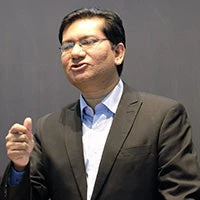 Considering Bangladesh’s lack of development and a predominantly rural context, it would have been difficult to imagine even a few years ago that an elderly widow living in a remote corner of this impoverished South Asian country could be receiving money from her son living in Dubai sitting right at home or making petty payments through her mobile phone. Not any more, though.
Considering Bangladesh’s lack of development and a predominantly rural context, it would have been difficult to imagine even a few years ago that an elderly widow living in a remote corner of this impoverished South Asian country could be receiving money from her son living in Dubai sitting right at home or making petty payments through her mobile phone. Not any more, though.
Bangladesh has recently emerged as a curious case of digital innovation to widen coverage and reach remote pockets. The country reached the lower middle income country status in 2015, and has showcased the potential of combating rural poverty through inclusive digital financial services.
This has proved to be an effective weapon to eliminate poverty and secure the sustainable development goals (SDGs) while the country advances towards Vision 2021 — lifting millions of Bangladeshis out of poverty. Innovation and digitization will surely set Bangladesh firmly on the path to becoming a middle-income country. Although ambitious, it is exactly what both the government and private sector are working towards.
Access to the formal financial system remains a challenge for the rural poor in Bangladesh even though the central bank announced a plan for inclusive digital financial programmes in 2015.
Our preliminary assessment finds that an overwhelming proportion of the population remain unbanked, and records further show that poor farmers living in remote villages are the most deprived. This naturally calls for a further in-depth investigation and evaluation of digital financial programmes to forge a path.
Initial data from our ongoing rigorous survey in rural Bangladesh states that the prevailing top-down mind set, as far as the banking service is concerned, needs to be overhauled and transformed into a bottom-up approach that appreciates the perception of the poor and their needs of financial services.
Concepts like savings, loans and insurance have little meaning to rural Bangladeshis. Instead what might matter to them are tools that safeguard their families from the economic and natural shocks through which they could ‘pay & receive,’ ‘borrow & repay,’ and ‘store & retrieve’ money.
Thus conventional concepts and products must be broken down to their basic functions that convey what they truly mean — safeguarding/storing/growing their money (savings & insurance) and spending/borrowing/investing money (loans) and so on.
Therefore, moving away from the conventions and exploiting the full potential of digital technology is imperative for digital financial inclusion.
Experts have to work towards a simple and affordable financial tool which acts as a cushion during times of urgent need. This tool should keep the family from having to borrow heavily during crises. It should prevent their plunge into further debt and in the long run contribute towards lifting them out of poverty.
The branch-based banking system fails at inclusion since rural villagers deal mostly in cash. But the cost of these cash transactions will have to be passed on to the customers, meaning that they would end up having high service charges to cover the overhead of rural branches of banks. Difficult as it is, to bring the poor illiterate rural farmer into the fold of a formal financial system, a high service charge would make it next to impossible.
Digital tools towards the same goals are accepted to be far more effective for the rural populace. Towards that end, electronic cash cards, agent banking, mobile phones and other digital means are opening up the possibility to connect rural households with reliable financial services and tools.
While it is yet to be seen that a comprehensive inclusive scheme has been developed, the Digital Financial Services (DFS) Lab+ — a joint initiative between Bangladesh Bank and A2I — is trying to come with an inclusive system.
This system will primarily strive for payment digitalisation, assisted e-commerce, behavioural communication change and increased financial literary among the poor farmers living in rural villages and especially the remote pockets of Bangladesh.
The A2I Project at the Prime Minister’s office is working with the Bill and Melinda Gates Foundation on the Consultative Group to Assist the Poorest (CGAP) to support product design experiments based on behavioural insights that addresses every aspect of the system including design features, price incentives, and marketing messages leading to widespread consumption of financial services. It is imperative, of course, that the services remain user-friendly, cheap and sustainable.
Securing effective access to capital for the rural poor is a challenge as well as the key to wholesome development for developing countries.


Join the Conversation